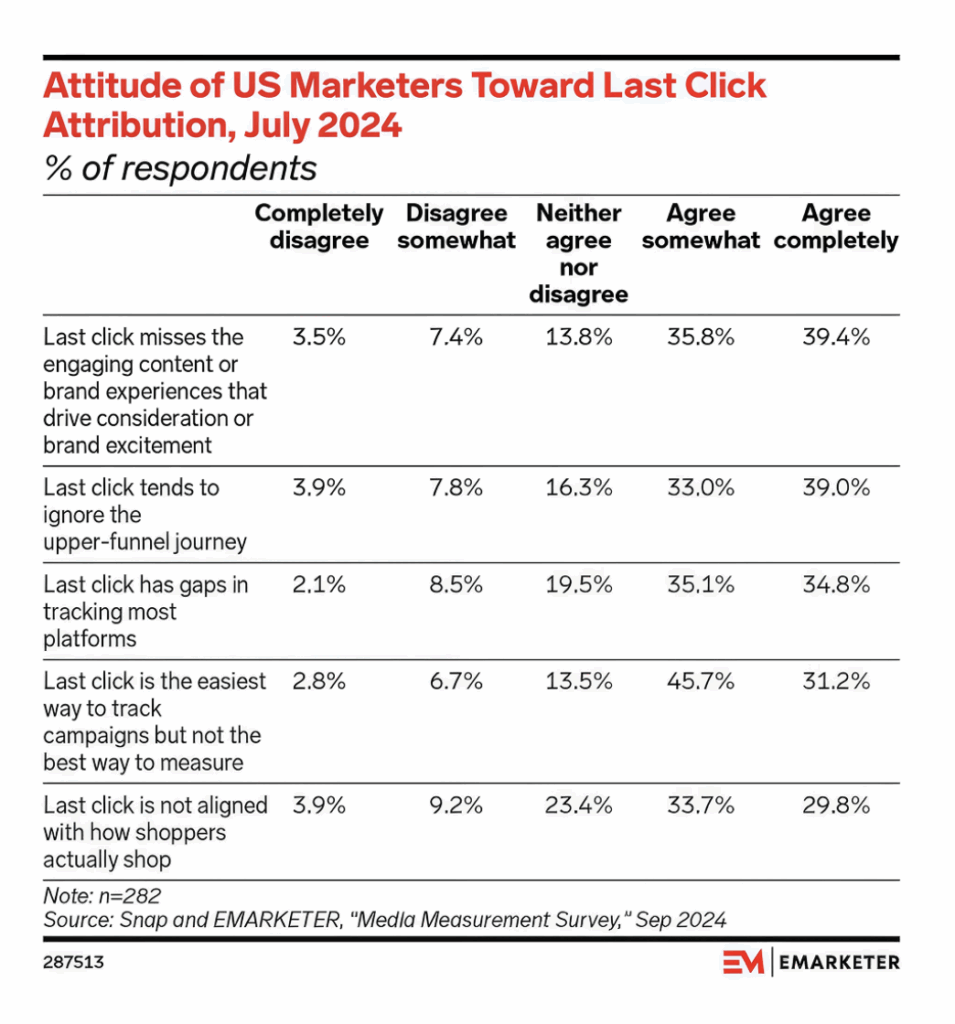Blog: There’s War in Your C Suite, And Growth Is The Casualty
Table of Contents
The CEO wants growth.
The CFO wants proof.
The CMO wants credit.
What do they get instead?
Confusion, conflicting dashboards, and a standing meeting that feels more like group therapy.
Sound familiar?
Welcome to the marketing mess at mid-sized companies.
Measurement Theater
Let’s stop pretending. You’re measuring marketing the wrong way, and you know it.
It’s not your fault. Companies like Google and Meta have pushed flawed attribution models for over 20 years.
Last month I facilitated a webinar for 150 CEOs. We polled the audience with two questions:
- How often does your finance leader question marketing reporting?
- How often does your executive team debate attribution models?
Nearly 100% of attendees said their finance leader challenges marketing reports frequently. Only 2% of executive teams debated attribution models.
WHAT DOES THIS MEAN?
It means no one is talking about why the numbers are off. Why the platform reports look great. Why revenue doesn’t.
It’s all because attribution is broken. Ad platforms benefit from grading their own homework.
Awareness budgets get slashed, and Google and Meta get credit for sales that would have happened without advertising.
The Misalignment Tax
According to a 2024 eMarketer survey, 78.4% of marketers still use last click attribution to measure media effectiveness, but only 21.5% of markets are confident that it’s reasonably accurate.

Last click is not truth. It’s just easy. It flatters Google, props up Meta, and keeps your agency at the table. It’s the wrong way to measure marketing effectiveness.
Eventually,
The CEO loses trust.
The CFO cuts spend.
The CMO updates their LinkedIn.
Are Your Ads Driving Revenue Or Just Taking Credit?
Attribution reports tell you who clicked. Contribution reports tell you what actually caused the sale.
That’s the idea behind incrementality testing—a way to measure marketing’s real impact.
It works like this:
- You compare two groups: people who saw your ad, and people who didn’t. Same audience, same time period.
- If the group who saw your ad bought more, that difference is your marketing’s true contribution.
Incrementality testing reveals the difference between actual impact and a lucky last click. And no—Google or Meta won’t show you that.
WHY IT MATTERS
Your biggest growth lever isn’t a shiny new tool.
Who gives a shit about personalization at scale or AI chat bots if you’re wasting your marketing budget?
Every dollar wasted on low-impact advertising is a dollar not driving growth. Fix that first, then scale.
THE BOTTOM LINE
When you’re trying to grow revenue, there are plenty of battles to fight. Just don’t let them be internal. You need a unified front.
And if marketing seems MIA, it’s likely not a people problem—they’re probably just caught in the crossfire of broken measurement.
The fix?
Align your C-suite. Build a culture of testing and rigorous measurement. Or keep writing checks and praying attribution makes sense next quarter.



